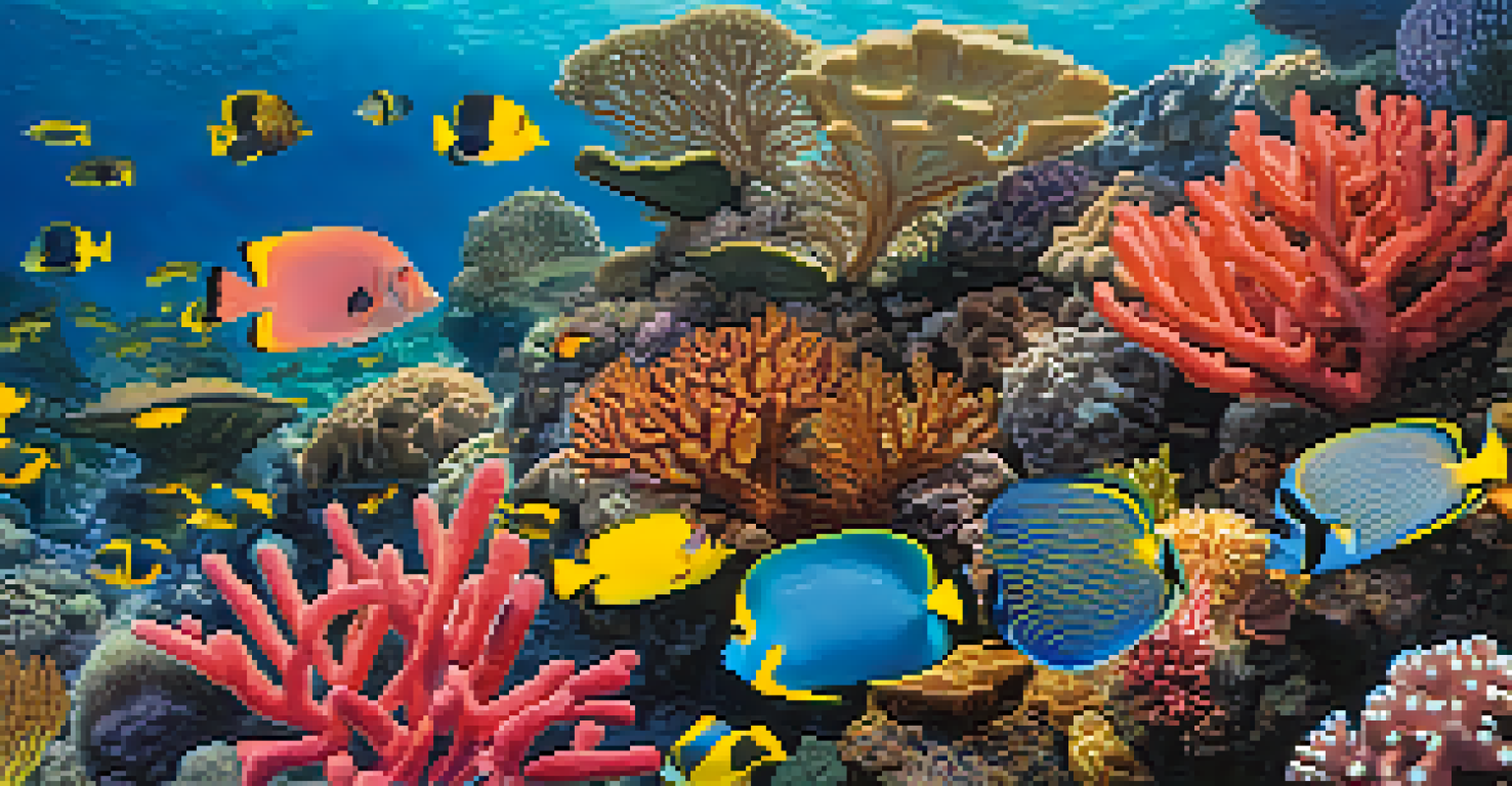How El Niño Affects Honolulu's Weather Patterns and Climate

Understanding El Niño and Its Global Impact
El Niño is a climate pattern that describes the unusual warming of ocean waters in the central and eastern Pacific. This phenomenon can lead to significant changes in weather patterns across the globe, including in places far from the equator. Essentially, El Niño affects atmospheric circulation, which can disrupt normal weather cycles. For Honolulu, this means that the typical tropical climate can experience unexpected shifts during these periods.
Climate change knows no borders. Its impacts are felt everywhere, including in the most remote corners of the globe.
One of the most fascinating aspects of El Niño is its ability to influence weather systems that are thousands of miles away. For instance, while some regions may suffer from drought, others may face increased rainfall. This interconnectedness showcases the complexity of our planet's climate system. In Hawaii, understanding these changes is crucial for preparing for extreme weather events.
As we delve into El Niño's effects on Honolulu specifically, it's important to note that scientists monitor this phenomenon closely. By studying patterns and historical data, they can provide forecasts that help residents and officials prepare for potential weather disruptions. This proactive approach is vital for a community that relies heavily on tourism and agriculture.
How El Niño Alters Rainfall Patterns in Honolulu
One of the most noticeable impacts of El Niño in Honolulu is the alteration of rainfall patterns. During an El Niño event, the islands typically experience wetter conditions, with increased rainfall occurring during the winter months. This is a stark contrast to the drier months that are usually expected, leading to a shift in local ecosystems and agriculture.

This sudden spike in rainfall can lead to both benefits and challenges for the local community. On one hand, the increased precipitation can replenish water supplies and support local agriculture. On the other hand, excessive rainfall can result in flooding and landslides, posing risks to both residents and infrastructure. Understanding these dynamics helps the community prepare and mitigate risks.
El Niño Affects Weather Patterns
El Niño leads to significant shifts in weather patterns, impacting rainfall, temperature, and storm activity in Honolulu.
Moreover, the variability in rainfall can affect the delicate balance of Hawaii's ecosystems. Certain native plants and animals have adapted to specific weather patterns, and any disruption can have cascading effects. Therefore, monitoring these changes is essential for conservation efforts and maintaining biodiversity on the islands.
Temperature Changes During El Niño Events
El Niño also leads to noticeable temperature fluctuations in Honolulu. During these events, the average temperatures tend to rise, resulting in warmer winters. This may sound appealing at first, but the increased heat can exacerbate existing issues such as drought and water shortages in some areas of the islands.
In the face of climate change, we must adapt our strategies and prepare our communities for the future.
Warmer temperatures can also impact the marine environment surrounding Honolulu. Coral reefs, which are vital to the local ecosystem, are sensitive to temperature changes. Elevated ocean temperatures can lead to coral bleaching, a phenomenon that threatens marine biodiversity and the fishing industry. Thus, the effects of El Niño extend beyond just land; they reach deep into the ocean as well.
As residents experience these temperature shifts, it's important to recognize the potential health implications. Higher temperatures can lead to heat-related health issues, particularly among vulnerable populations. Community awareness and preparedness are essential in addressing these challenges during El Niño years.
Increased Storm Activity Linked to El Niño
Another significant impact of El Niño on Honolulu's weather is the increase in storm activity. During El Niño years, the region often sees more tropical storms and hurricanes forming in the Pacific. These storms can bring heavy rains, strong winds, and dangerous surf conditions, posing risks to both residents and visitors.
While Hawaii is used to dealing with hurricanes, the intensity and frequency during El Niño events can catch the community off guard. It's not just about the storms themselves, but also the secondary effects, such as flooding and infrastructure damage. Preparedness is key, and residents are encouraged to stay informed about storm forecasts and emergency plans.
Impact on Marine Life and Fishing
Rising ocean temperatures during El Niño disrupt marine ecosystems, affecting fish populations and the local fishing industry.
Additionally, the economic impact of increased storm activity can be significant. Tourism, a major pillar of Honolulu's economy, can be affected by bad weather, leading to cancellations and decreased visitor numbers. Thus, understanding the link between El Niño and storm activity is vital for both the community and local businesses.
Impact on Marine Life and Fishing Industries
The effects of El Niño extend into the waters surrounding Honolulu, significantly impacting marine life. As ocean temperatures rise and rainfall patterns shift, the delicate balance of marine ecosystems is disrupted. This can lead to changes in fish populations and migration patterns, which are crucial for local fishermen.
For those in the fishing industry, understanding El Niño's impact is essential for sustaining livelihoods. Certain species may become more abundant during these periods, while others may decline. Fishermen must adapt their strategies to account for these changes, which can be both challenging and rewarding.
Moreover, the tourism sector that relies on snorkeling and diving experiences may also feel the effects of altered marine conditions. Coral bleaching and changes in fish populations can detract from the vibrant underwater scenery that attracts visitors to Honolulu. Thus, the interconnection between climate patterns and local economies highlights the importance of ongoing research and awareness.
Community Preparedness for El Niño Events
Given the various impacts of El Niño on Honolulu's weather, community preparedness is more important than ever. Local authorities and organizations work together to develop plans that address potential weather-related challenges. This includes everything from emergency response strategies to public awareness campaigns.
Education plays a crucial role in ensuring that residents understand what El Niño is and how it can affect them. Workshops, informational sessions, and community outreach programs help equip individuals with the knowledge they need to prepare their homes and families. The more informed a community is, the better it can respond to unexpected weather changes.
Community Preparedness is Key
Proactive community preparedness and education are essential for mitigating the impacts of El Niño on residents and local economies.
Additionally, collaboration with scientists and meteorologists is essential for accurate forecasting. By sharing data and resources, the community can stay ahead of potential threats. This proactive approach fosters resilience and helps minimize the effects of El Niño on daily life in Honolulu.
Future Projections and Climate Adaptation Strategies
As climate change continues to influence weather patterns, understanding future projections of El Niño is vital. Scientists are currently working on enhancing predictive models to better forecast when these events may occur and their potential impacts on Honolulu. This research is crucial for adapting to changing climate conditions.
With the knowledge gained from past El Niño events, communities can implement adaptation strategies that minimize risks. These strategies could include improving infrastructure, enhancing water management systems, and promoting sustainable practices in agriculture and fishing. By preparing for future changes, Honolulu can better safeguard its residents and environment.

Ultimately, the goal is to build resilience against the impacts of climate change and El Niño. This requires a collaborative approach that involves local communities, governments, and scientists working together. By prioritizing adaptation, Honolulu can navigate the uncertainties of future weather patterns more effectively.